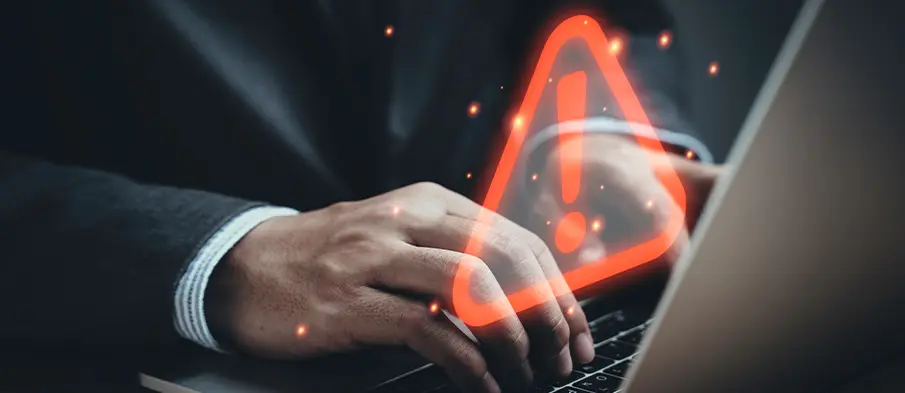
After a decade at the core of enterprise operations, Windows 10 has ingrained such familiarity that it’s easy to forget just how much everything still leans on it. However, with its official support ending in October 2025, that safe bet will be a thing of the past. And letting go won’t be easy for many. Especially when dependencies have layered up quietly over years of updates and workarounds.
But beyond that, Windows 10 will also lose access to essential security patches once it reaches end-of-life (EOL), severing its link to the protections that once kept it safe. And here’s the thing about systems that aren’t being patched: they’re always a step behind when the next threat surfaces. We’ve already seen how that story unfolds.
Back in May 2017, the infamous WannaCry ransomware attack swept across the globe, making victims of unpatched Windows devices. The attack propagated via EternalBlue—an exploit developed by the U.S. National Security Agency and later leaked by an external group. Yet, Microsoft had crucially released a patch for EternalBlue on supported Windows systems well before the attack struck. And in most cases, those updates made all the difference in containing the threat.
But this leads us to a very pressing question: what happens when the next critical vulnerability targets EOL systems—those left outside the update horizon?
The Cost of Hesitation
WannaCry also gave us a sobering glimpse into the consequences of leaving EOL systems exposed. Just look at its attack on UK’s National Health Service (NHS), where some machines were still running Windows versions well past their support lifecycle.
Over 60 NHS trusts were disrupted in the initial WannaCry surge, with millions piled up in recovery costs. This comes as no surprise, either. Many had spent a “trifling” amount—if anything at all—on securing their systems. In hindsight, the digital ransoms ironically dwarfed what a wholesale OS security upgrade would have cost.
The NHS’s reliance on legacy systems wasn’t exactly a unique case. It reflected a broader reality where industries across retail, manufacturing, and even tech still leaned on legacy systems. Microsoft eventually released the WannaCry patch for older systems, which were previously available only to organizations that had paid for a custom support plan. But by then, the fallout had already taken hold.
Windows 10 will be no different. After October 2025, these systems will lose their “digital immune system,” turning every outdated driver and software into a growing security liability. The longer they’re kept online, the harder and more expensive they become to defend. Then, the window for such oversights will widen further, possibly setting the stage for a repeat of history on an even larger scale.
Why Upgrading Isn’t Always Straightforward
Despite the urgency, OS migrations at this scale rarely mirror the simplicity of a straightforward path. It winds through a complex tangle of systems and dependencies that all need to keep functioning post-migration.
Among these, legacy applications are a persistent challenge that continues to complicate progress in many environments. They can easily conflict with newer versions of Windows at any given time. Many organizations depend on them because they still work. Some enterprise applications could also be custom-built for specific OS versions that demand extensive testing, or outright replacement on a new platform. These applications need to be updated organization-wide, and without delay. For lean IT teams, coordinating software rollouts with these requirements can quickly outstrip available resources.
Visibility challenges add yet another layer of complexity. In sprawling enterprises that span global offices and remote workforces, simply knowing which machines are still on Windows 10 (and which patches they’re missing) is seldom trivial. A wider part of the problem lies in the fragmented nature of modern IT environments: shadow IT pockets, segmented networks, and offline devices make it easy for outdated systems to lurk undetected.
Even with the new OS in place, there’s still work to be done. Without proper monitoring tools from the get-go, businesses risk dreaded interruptions that can frustrate users. Add compliance mandates into the mix, where certain industries face audits or fines for running unsupported software, and the margin for error shrinks to almost zero.
Balancing these complexities requires a methodical approach. Without a centralized, scalable system, OS migration becomes a multi‑quarter quagmire rather than a strategic move.
Laying the Groundwork to Move Forward
Before any migration begins, organizations need a clear picture of what they’re working with. And in this line of work, it often falls to IT admins to ensure every device and application is accounted for. That includes identifying anything—missing patches, legacy applications, and the like—that could misbehave under a new OS. Left unchecked, these outliers will create more headaches than they’re worth during your migration.
Today’s endpoint oversight strategies take a cohesive approach to tracking all corporate devices. With the right management systems in place, IT teams can maintain an up-to-date inventory of software versions and patch levels, and even push out critical updates automatically when needs arise.
In high-stakes situations, that automated responsiveness becomes critical. Suppose when Microsoft issues the next zero‑day patch: it can be deployed across the fleet almost immediately, reducing the exposure window.
Of course, keeping devices updated is only one layer of the equation. For instance, some endpoints can’t even make the leap to a new OS. It may be locked into critical functions with legacy software that can’t be easily replicated, while others may be held back by hardware limitations. The best practice is to identify these exceptions early before migration begins.
Once flagged, these endpoints should be isolated from business-critical applications and networks, and governed by strict set of compliance rules. In particular, zero trust mechanisms play a crucial role in ensuring outdated systems don’t become a liability in sensitive device environments. Zero trust can be enforced based on encryption status, password compliance, and multiple other security benchmarks that even older devices can realistically meet.
And effective control doesn’t stop there. All machines, regardless of age, must be treated like living systems requiring constant care throughout their evolving lifecycle. This way, both old and new systems are aligned under a single, secure operational framework.
This time around, IT leaders have both the tools and the time on their side. Moving off Windows 10 isn’t merely an exercise in replacing one OS with another. It’s also a catalyst for rethinking how enterprises can secure and manage them. The deadline may be October, but the window for smart action is already open.






